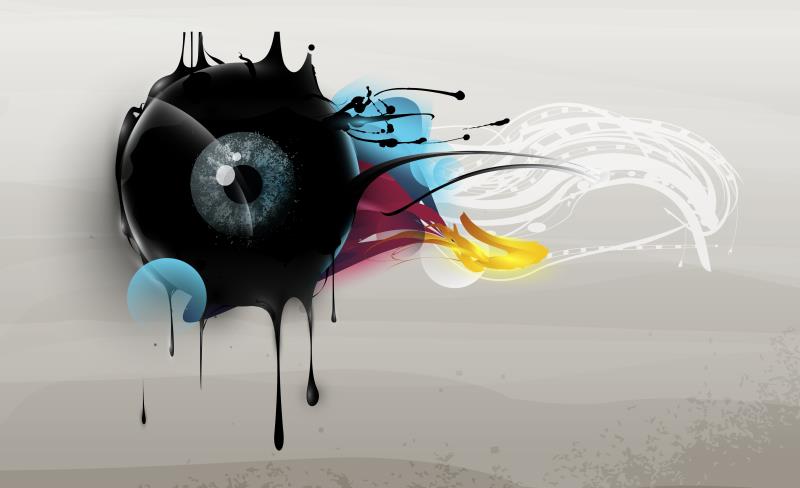
The HAWK/HARRIER* trials reveal favourable outcomes with the anti-VEGF**-A brolucizumab – showing noninferiority to fixed-dose aflibercept in improving visual function, a sustained effect, and a favourable safety profile – for the treatment of neovascular age-related macular degeneration (nAMD).
The frequent injections required for nAMD entail numerous clinic visits, which could lead to nonadherence and suboptimal outcomes. [Br J Ophthalmol 2014;98:1144-1167] “[The] challenge [in nAMD treatment] is to maintain efficacy while reducing clinic visits,” said the researchers.
“[Both studies] met the primary endpoint of noninferiority in BCVA*** of brolucizumab vs aflibercept, with >50 percent of brolucizumab 6-mg patients being maintained on a Q12W interval through week 48,” they said.
A total of 1,817 individuals with untreated, active choroidal nAMD were included in the analysis. Eyes were randomized 1:1:1 to intravitreal brolucizumab 3 or 6 mg (B3 or B6, respectively) or aflibercept 2 mg (HAWK) or 1:1 to B6 or aflibercept 2 mg (HARRIER). After the loading phase (three injections at weeks 0, 4, and 8), brolucizumab was administered Q12W and adjusted to Q8W in the presence of disease activity. Aflibercept was given Q8W. [Ophthalmology 2020;127:72-84]
At week 48, noninferiority of brolucizumab to aflibercept was observed in terms of BCVA gains from baseline (least-squares [LS] mean, +6.1 [B3] and +6.6 [B6] vs +6.8 letters [HAWK] and +6.9 vs +7.6 letters [HARRIER]; pnoninferiority<0.001 for all).
Less visits, less burden
The monthly monitoring required for nAMD regimens does not alleviate the overall patient and healthcare burden, noted the researchers. “Treat-and-extend” was employed as an alternative approach to stretch treatment intervals in patients without active disease. [Ophthalmology 2015;122:2514-2522; Ophthalmology 2018;125:57-65] The goal is to establish a regimen that is just as effective as a fixed-dose scheme, with individualized monitoring and dosing intervals, they said. “[This] may alleviate the treatment burden associated with nAMD.”
At week 16, fewer B6-treated eyes had disease activity vs aflibercept-treated eyes (24 percent vs 35 percent; p=0.001 [HAWK] and 23 percent vs 32 percent; p=0.002 [HARRIER]), suggesting the prolonged duration of effect with brolucizumab.
The probability of maintaining the Q12W dosing for brolucizumab after loading through week 48 was >50 percent in both trials. This rose to about 85 percent in the absence of disease activity during the first Q12W interval. This translates to a reduction of two injections/year with the Q12W dosing as opposed to the Q8W regimen, thus meeting the objective of cutting the treatment burden and clinic visits, noted the researchers.
Anatomic advantage, favourable safety
Anatomic outcomes at week 48 favoured B6 over aflibercept, as reflected by the greater CST# reductions (LS mean, -173 vs -144 µm; p=0.001 [HAWK] and -194 vs -144 µm; p<0.001 [HARRIER]) and fewer B6-treated eyes with intra-/subretinal fluid (31 percent vs 45 percent and 26 percent vs 44 percent, respectively; p<0.001 for both).
“These advantages in anatomic parameters support the underlying hypothesis that a lower molecular weight combined with a higher concentration gradient between the vitreous and retina increase the drug distribution to the target site, resulting in more effective control of anatomic disease activity. Collectively, [these] suggest greater treatment duration and thus reduced treatment need with brolucizumab,” said the researchers.
Adverse event (AE) rates were similar across all arms in both HAWK (from 47–50 percent [ocular] and 64–72 percent [nonocular]) and HARRIER (from 32–33 percent and 57–59 percent, respectively). AEs of interest with B6 (eg, uveitis, iritis) were mostly mild to moderate in intensity and resolved with topical corticosteroids or anti-infectives with no sequelae.
“[Both] studies successfully evaluated an alternative treatment option [for nAMD], combining the prolonged duration of effect of brolucizumab with an individualized treatment regimen, allowing for favourable efficacy, effective treatment scheduling, and minimal monitoring burden,” they concluded. The 96-week results will provide further insight into the safety and efficacy of brolucizumab in this setting.